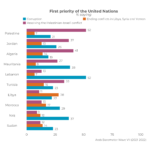In the Middle East and North Africa (MENA), the coronavirus (COVID-19) is disproportionately affecting poor households, who are more likely to live in cramped conditions, often with elderly relatives, and to depend on informal sector jobs with no health insurance. Yet these households are the least likely to be heard through surveys, which increasingly use the internet for data collection.
A rapid increase in access to the internet offers both opportunities and challenges to the field of socioeconomic surveys. There’s considerable interest in modes of data collection during the COVID-19 pandemic. Internet surveys offer researchers a relatively cheap tool for rapid assessment in a context where face-to-face data collection is not possible. Hence many such surveys have been carried out and their results widely shared. But these may underrepresent many of the people we are particularly concerned about, such as the poor and vulnerable, people in rural areas or slums, and women. To illustrate this point, we look at internet use trends among different segments of the population in the region’s developing countries.
According to the International Telecommunications Union, internet use ranges from 30 percent to 80 percent across MENA (Figure 1). These numbers can mask variations in the intensity of use in each country. In order to check this, we explored 2018-19 data from Arab Barometer, which collects information about attitudes and values of the citizens in the Arab states. As shown in Figure 2, a substantial share of respondents use internet only a few days a week or even less: 30 percent, for example, in Algeria. If those who use internet infrequently have distinct characteristics, there would be some bias in the data obtained through internet surveys…
Read full article at World Bank Blogs

